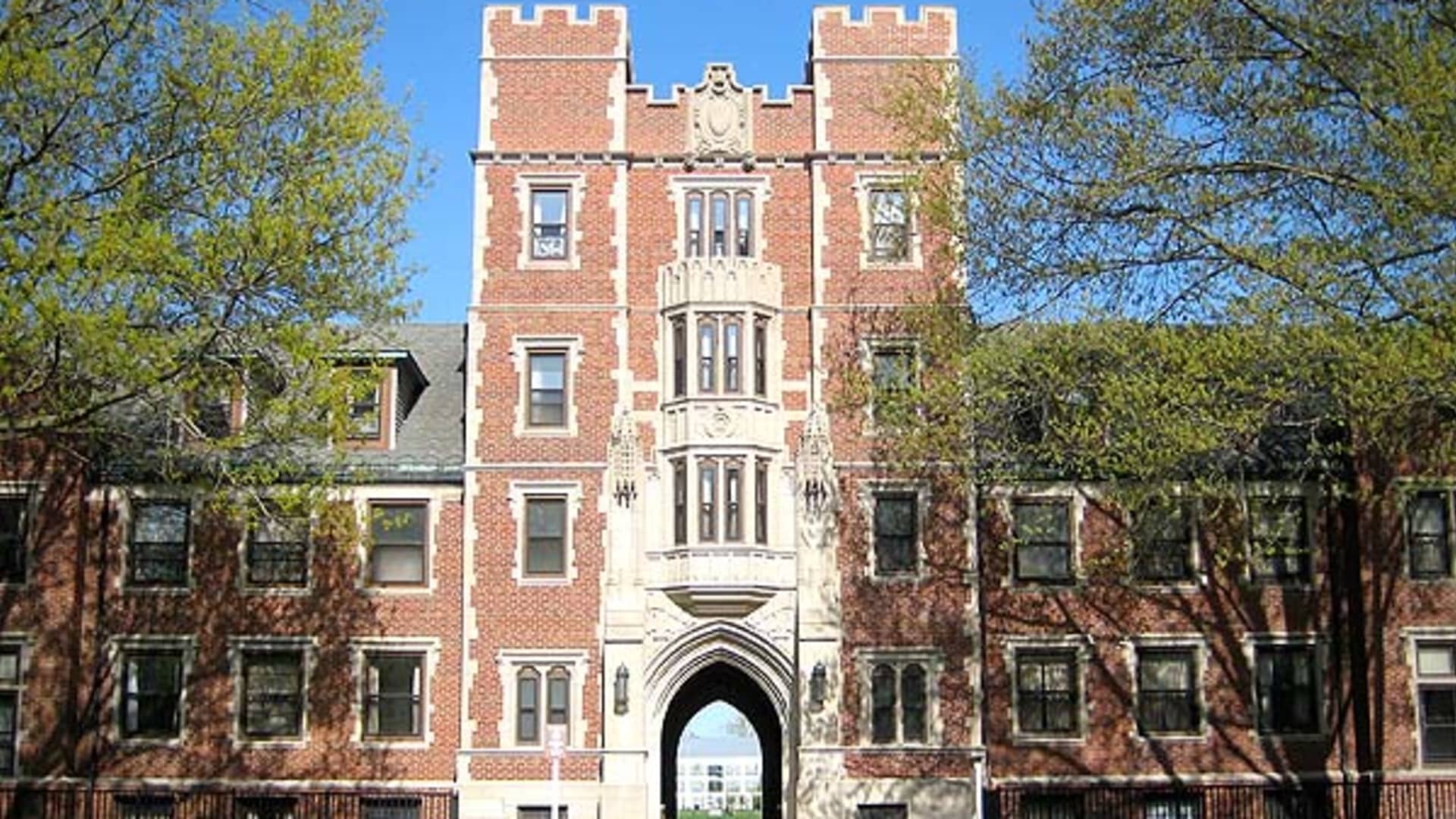Increasingly, college is an option only for those who can afford it or are willing to take on massive student debt. But not all schools see it that way.
To make higher education more accessible, a growing number of institutions are eliminating student loans altogether.
More than 20 schools now have “no-loan” policies, which means they will meet 100% of the undergraduate’s need for financial aid — without education debt.
“Loans are not part of the deal,” said Anne Harris, the president of Grinnell College in Grinnell, Iowa, which offers grants in the school’s financial aid packages instead of loans. “The clarity of that has been invigorating.”
Coming out of the pandemic, Grinnell was committed to college access, Harris said, and implemented a no-loan policy for the 2021-2022 academic year.
“Doing this doesn’t solve all the issues that are out there, but it is a decisive step forward,” she said.
More from Personal Finance:
Student loan forgiveness applications go live soon
This is the best time to apply for college financial aid
Colleges struggle with enrollment declines, underfunding
That opened the door for sophomore Beck Lambert, of Manchester, New Hampshire, who couldn’t afford college. “I couldn’t even afford to apply to go to college,” Lambert said.
Lambert, 20, had already worked full time at a gas station to help cover costs in high school and was reluctant to borrow money for college. “I did not want to be in debt for the rest of my life,” Lambert said. “When you’ve lived with debt looming over your shoulders, it can be terrifying.”
Lambert applied early decision and is now majoring in history at Grinnell — on track to be the first person in Lambert’s family to graduate from college.
‘Accessibility and affordability is the future’
There are many would-be college students who are concerned about paying for college and the student loan burden it may require, according to Robert Franek, The Princeton Review’s editor-in-chief and author of “The Best 388 Colleges.”
“If you can be a no-loan school that’s going to be significant,” he said.
“I see them as trailblazers in their ability to diffuse a family’s biggest concern, which is taking on too much debt to pay for college,” Franek added. “They are listening to students and their families, and they are directly responding.”
Schools that are able to do it are moving in that direction.John Leachassociate vice provost for enrollment and financial aid at Emory University
As the debate over student loan forgiveness wages on, the best way forward “is to limit the need for students to borrow in the first place,” said John Leach, Emory University’s associate vice provost for enrollment and financial aid. “Schools like Emory very much feel that responsibility.”
Recently, Emory expanded its financial aid offerings to cover 100% of demonstrated need by replacing loans with grants. The additional cost to the school was roughly $8 million, according to Leach.
“The budget modelling is key,” Grinnell’s Harris also noted. “If it gets said, can it be sustained?” Funding a no-loan policy costs Grinnell an additional $5 million a year, she estimated.
“Schools that are able to do it are moving in that direction or have already moved in that direction,” Leach said.
Accessibility and affordability is the future.Doug HicksPresident of Davidson College
Davidson College in Davidson, North Carolina, has had a no-loan policy in place since 2007.
“We were the first national liberal arts college to make that commitment,” said Doug Hicks, Davidson’s president.
“Accessibility and affordability is the future,” Hicks said. “As a parent myself, I know that.”
Generous aid offerings lend a ‘competitive advantage’
To be sure, there is a benefit for colleges, as well.
At Davidson, application volume has jumped to 6,500 today from around 4,500 applications in 2007, when the school first eliminated loans. That, in turn, has improved the school’s yield — or the percent of students who choose to enroll after being admitted — and academic standing.
“We’ve seen a far more diverse student body,” Hicks said. “A student body that’s far more interesting.”
“Being able to support students and have a world-class financial aid program helps us have a world class student body,” Emory’s Leach also said. “It’s a competitive advantage to have more generous need-based aid.”
‘No loan doesn’t mean free’
Of course, students may still be on the hook for the expected family contribution, as well as other costs, including books and fees. There could also be a work study requirement, depending on the school.
“No loan doesn’t mean free,” Franek noted.
Lambert, for example, works two part-time jobs on campus to cover the family contribution, which is roughly $1,800 a semester.
